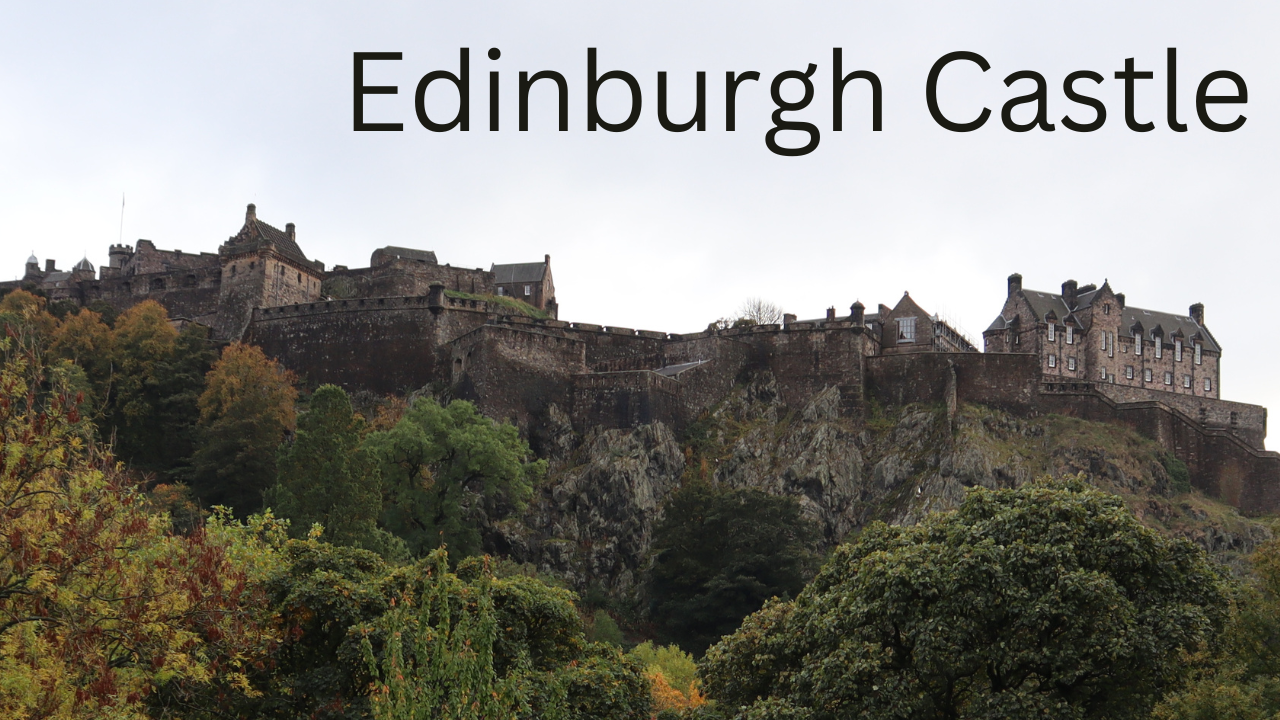Edinburgh Castle stands proudly in the heart of the city high upon Castle Rock, an extinct volcano. The site has been occupied for at least 3000 years and has been a royal centre since at least 1093 up until 1633 when its principal purpose became a military base. The castle has seen its fair share of warfare, in fact it is the most besieged place in Great Britain.
| Built | 11th Century Onwards |
| Type | Medieval Castle |
| Condition | Intact |
| Ownership | Historic Scotland |
| Access | Public – Admission Fee |
Click here to watch our video exploring Edinburgh Castle and discover it’s history
Edinburgh Castle History – Long, Long Ago
Edinburgh Castle stands prominently on top of Castle Rock, an extinct volcano which is estimated to have risen about 350 million years ago. The summit is surrounded by rocky cliffs to the south, west and north which rise to a height of 80 metres creating natural defences. Access to the summit can be found to the east where the ridge slopes more gently.
During the 1990’s evidence was discovered that there had been a settlement on the site during the Bronze Age, possibly as early as 900 BC, which would make it the longest continuously occupied site in Scotland.
In the 1st century AD there was an Iron Age settlement and fort based on top of Castle Rock but there is no record of any Roman interest here during this period.
The Welsh poem ‘Y Gododdin’ tells the tales of the Gododdin Kings, who it is thought resided at the fortress Din Eidyn, as it was then known on Castle Rock. In around 600 AD, following a year of feasting, the King and his warriors set out to battle the Angles at “Catreath” (possibly Catterick) in Yorkshire. The mighty Gododdin warriors never returned though, the poem goes on to tell how they were massacred in the battle.
In about 640 AD, Oswald, the Anglo-Saxon King of Bernicia captured Castle Rock. The English then added ‘burgh’, meaning fortress, to the castle’s name and the site became known as Edinburgh.
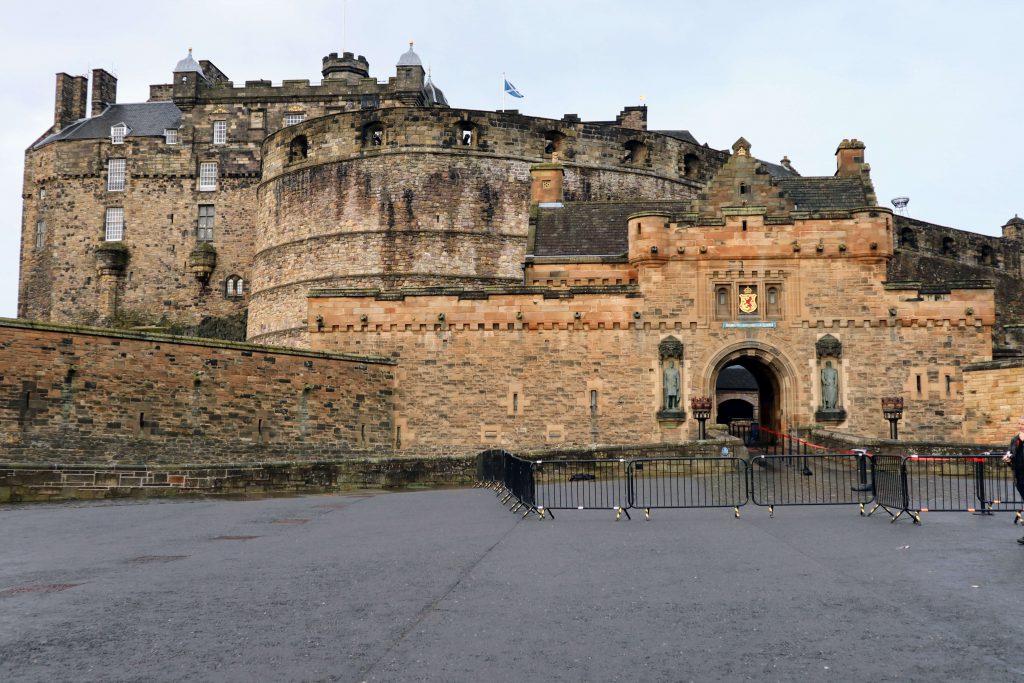
Becoming The Royal Castle
The first documentary evidence of a royal castle at the site comes during the reign of King Malcolm III (1031-1093) from John of Fordun’s account of King Malcolm’s death. The castle was then known as the “Castle of Maidens”, it is unknown why the castle was called this but there was a tale that the Picts used to keep virgins here.
In 1093, King Malcolm III and his eldest son were in Northumberland fighting the English and both were killed. After hearing the devastating news, Queen Margaret died from grief three days later. Queen Margaret, also known as “The Pearl of Scotland”, had been no ordinary queen, she did much charitable work and was a devout Christian. In 1250 she was canonised and became a saint.
Malcolm and Margaret’s youngest son became King David I and during his reign (1124-1153) he transformed Edinburgh Castle into a major royal fortress. Most of the buildings constructed during this period would have been built from timber. The only documented building built of stone was St Margaret’s Chapel, which David built in honour of his mother. The chapel still stands today on the highest point of the rock and is the oldest part of Edinburgh Castle.

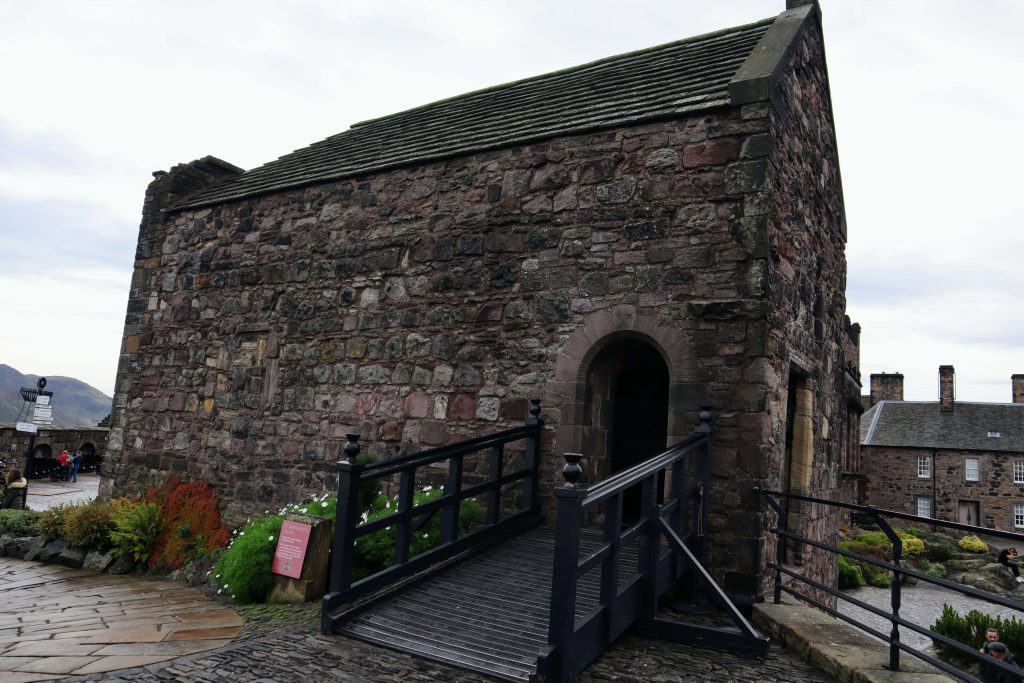
In 1174, King William “the Lion” was forced to sign the Treaty of Falaise and surrender Edinburgh Castle to the English after he was captured at the Battle of Alnwick. The castle remained in English King Henry II’s control for twelve years until in 1186 it was returned to William as a dowry for his English bride, Ermengarde de Beaumont.
Wars of Scottish Independence
In 1286 King Alexander III died suddenly without a clear heir, leaving the throne empty. This led to the “Great Cause” where rival noblemen put forward their claims to the throne. King Edward I of England was invited to adjudicate and chose John Balliol, Lord of Galloway, who was crowned King John In November 1292.
King Edward used this opportunity to attempt to ascertain himself as the feudal overlord of Scotland. Eventually King John’s lords rose up in rebellion and Edward was further angered by the relationship between Scotland and France becoming closer (England’s rival at the time). King Edward launched an invasion of Scotland, the First War of Scottish Independence.
Edinburgh Castle was surrendered to the English in June 1296, following three long days of bombardment. In order to put down the Scottish, Edward removed the national archives, the crown jewels and the ancient symbol of Scotland’s monarchy, the Stone of Destiny and took them to London.
After 18 years of being in English control, Edinburgh Castle was finally recaptured by the Scottish in March 1314 by Sir Thomas Randolph, Earl of Moray and nephew of King Robert the Bruce. Thomas assembled a surprise attack in the dead of night, he and about 30 men were guided from the bottom of Castle Rock up a secret route on the north face by William Francis. Randolph’s men then scaled the steep wall, at the top the castle guards never imagined anyone would be able to enter the castle from the steep rocky cliffs and therefore they were not expecting or prepared to be attacked. The surprise attack worked and Randolph and his troops took control of the castle.
Edinburgh Castle was now back in the hands of the Scottish King Robert the Bruce and he immediately ordered the castle’s destruction so that it could never be reoccupied by the British. The only structure left standing was St Margaret’s Chapel. The castle was left in this ruinous state for the next twenty years.
Following Robert the Bruce’s death in 1329, there was again a dispute over the crown’s succession and King Edward III used the opportunity to invade Scotland, the Second War of Scottish Independence began. In 1335 Edinburgh Castle was back in English hands and they set about rebuilding the fortress from scratch.
The English did not hold the castle for long, in 1341 Sir William Douglas came up with a cunning plan to take the castle back. Douglas and 200 men disguised themselves as merchants from Leith. They were eagerly welcomed into the castle with their supplies. Once the Scots had crossed the drawbridge they halted and jammed the portcullis open to allow a larger nearby hidden force to join them and retake the castle.

King David II
In 1357 the Wars of Independence came to a close and Robert the Bruce’s son, David became King David II. David chose Edinburgh as his capital and began rebuilding Edinburgh Castle. David’s Tower was to be his residence (although it was not completed before his death in 1371) and he built a number of other towers including the Well House Tower and Constable’s Tower (where the Portcullis Gate now stands).
Black Dinner
In 1437, the six year old James II was crowned King following his father’s (James I) assassination. As James II was too young to make the decisions needed to rule, political power was shared between William Crichton and Sir Alexander Livingston. Crichton wanted to quash any potential political power the noble Douglas family might have or gain, so in November 1440 an invitation to dinner was sent to the 16 year old William, 6th Earl of Douglas and his younger brother.
The legends say that the boys were getting on well with the 10 year old King James II when the boys were presented with a very strange dish, a bull’s head. This was a signal and Douglas boys were seized. The young King James II begged Crichton to release the boys but his pleas were to no avail. The Douglas boys were dragged to Castle Hill and beheaded.
Following this bloodshed you might expect James II to have been sympathetic to the Douglases, but it was James who personally killed William Douglas, 8th Earl, in 1452 and in 1455 he besieged all major Douglas strongholds thus crushing any remaining power the Douglas family had.
During this period construction continued at the castle. Crown Square was laid out, royal apartments were built and a Great Hall was in existence although it was not completed until the early 16th century. In 1464 the current approach road up the north-east side was built.
Artillery Arrives At Edinburgh Castle
James II was well known for loving guns and brought much modern artillery to Edinburgh Castle.
James II married Mary of Guelders and in 1457, Mary’s uncle, the Duke of Burgundy sent James II the ultimate siege weapon as a gift, the legendary Mons Meg. At the time she was the cutting edge of military technology, weighing in at 6 tonnes she could fire a stone ball almost 2 miles.
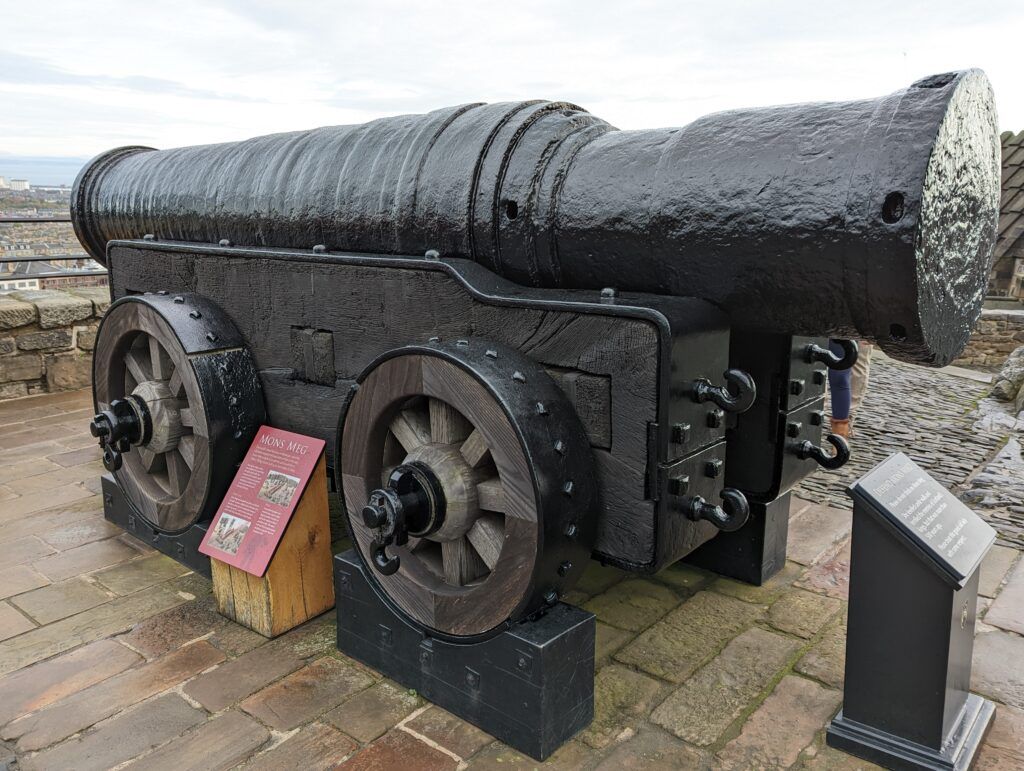

Cannons were also to be James II’s downfall, in 1460 he had laid siege to Roxburgh Castle, he was standing close to one of his cannons when he ordered it to be hastily fired. The cannon exploded killing James.
Edinburgh Castle was increasingly used as an arsenal factory and by 1511 it was the principal plant in Scotland.
At around the end of the 15th century, King James IV built Holyroodhouse about a mile away from Edinburgh Castle (today the two are connected by the road known as the Royal Mile). Holyrood offered more comfortable and palatial accommodation and the royal family began to stay more frequently there.
In around 1503, James IV aged 30 married Margaret Tudor, aged 13 and the eldest daughter of King Henry VII of England. This marriage was meant to bring peace and unity between England and Scotland but things did not go to plan. In 1513, James was in the battle of Flodden field fighting the English army of Henry VIII, Margaret’s brother and was killed.
16th Century
When James V died in 1542 the crown passed to his one week old daughter, Mary, Queen of Scots. King Henry VIII of England attempted to force dynastic marriage on Scotland but the Scots refused and Henry invaded Scotland.
In 1561, the Catholic Mary, Queen of Scots returned from living in France to begin her reign. In 1565 Mary married Henry Stuart, Lord Darnley. Darnley is said to have quickly grown arrogant and dissatisfied with his position of King Consort. The following year Mary gave birth to a son, James (who would later become king of both Scotland and England) In Edinburgh Castle. It is believed she chose to stay in Edinburgh Castle for the birth for safety as she was facing rebellions from powerful Scottish nobility.


In 1567 Darnley was murdered and three months later Mary married James Hepburn, 4th Earl of Bothwell who was a key suspect murder suspect. Many Scottish nobles rebelled against Mary and she was forced to abdicate. Mary fled to England but some Scottish nobility still supported her cause.
Scotland was now divided on its beliefs about who should be monarch, James with Regent Moray and later the regent Earl of Lennox ruling until he came of age or Mary. Sir William Kircaldy of Grange was appointed Keeper of Edinburgh Castle. Grange initially supported Moray’s claim to the throne but switched sides. This conflict resulted in what became known as the “Lang Siege” (Scot’s word for long). In May 1571 there was a month-long siege of the town and later in October a shorter second siege.
The Regent King’s side appealed to Queen Elizabeth I of England for help and Elizabeth sent ambassadors to negotiate. A brief truce was called between July 1572 and January 1573 before hostilities resumed. Grange began bombing the town and the King’s forces prepared for a siege building trenches and poisoning St Margaret’s well.
In April, 1000 English troops arrived to aid the King’s cause and artillery was placed in various positions around the castle. On 22nd May the south wall of David’s Tower collapsed and the following day Constable’s Tower was reduced to a pile of rubble. Grange held out after all hope was lost and his remaining men threatened to mutiny, finally on 28th May, Grange surrendered Edinburgh Castle.
Rebuilding & More War
Once again the Castle was rebuilt, including the Spur, the new Half Moon Battery and the Portcullis Gate. In 1603, James VI left Scotland and moved his residence to London when he became James I King of England. Extensive repairs were carried out in preparation for his return visit to the castle in 1617 and to mark his 50th anniversary on the Scottish throne.
James I’s son, King Charles I, visited Edinburgh Castle in 1633 for his Scottish coronation. Charles held a feast in the Great Hall and spent the night at the castle, this was the last time a reigning monarch spent the night at the castle.
In 1639, Charles tried to reform the Scottish church. Many objected to this and a document was drawn up, The National Covenant. Those who signed the document became known as the Covenanters. Civil war broke out between the two sides, the Covenanters besieged Edinburgh Castle twice.
In March 1639, the Covenanters leader, Alexander Leslie arranged a parley with the Royalist constable, however this was a trick and Leslie used the opportunity to plant a bomb that blew off the main gate and allowed Leslie’s troops to flood through the gate and take control of the castle.
The following year Edinburgh Castle was back in Charle’s hands under the control of its new commander, Lord Ettrick. Once again the Covenanters laid siege to the castle. The people of the town had grown weary and were unsympathetic to Charle’s cause, so Charles ordered Ettrick to fire on them, which he did.
The covenanters then tried another tactic, they undermined the Spur to enter the castle. The Royalist defenders had already made plans for such an approach and trapped the besieging Coventanters. The siege continued but became more of a mere blockade, however after three months Ettrick surrendered.
Although Charles I had not been very popular with many Scots, they were still horrified when he was executed in 1649 by Parliament. Charle’s son was declared King Charles II of Scotland which angered Oliver Cromwell, the general of the new Commonwealth of England and Cromwell launched an invasion of Scotland.
Cromwell began a three month siege on Edinburgh Castle. His first manouvre was to attempt undermining from the south but the Scotts dropped a barrel bomb and the mine collapsed. Next he assembled an artillery fort at the top of the Royal Mile to fire on the castle. No return shots were made for fear of damaging churches and local residents. The castle Governor surrendered despite having enough supplies to hold out.
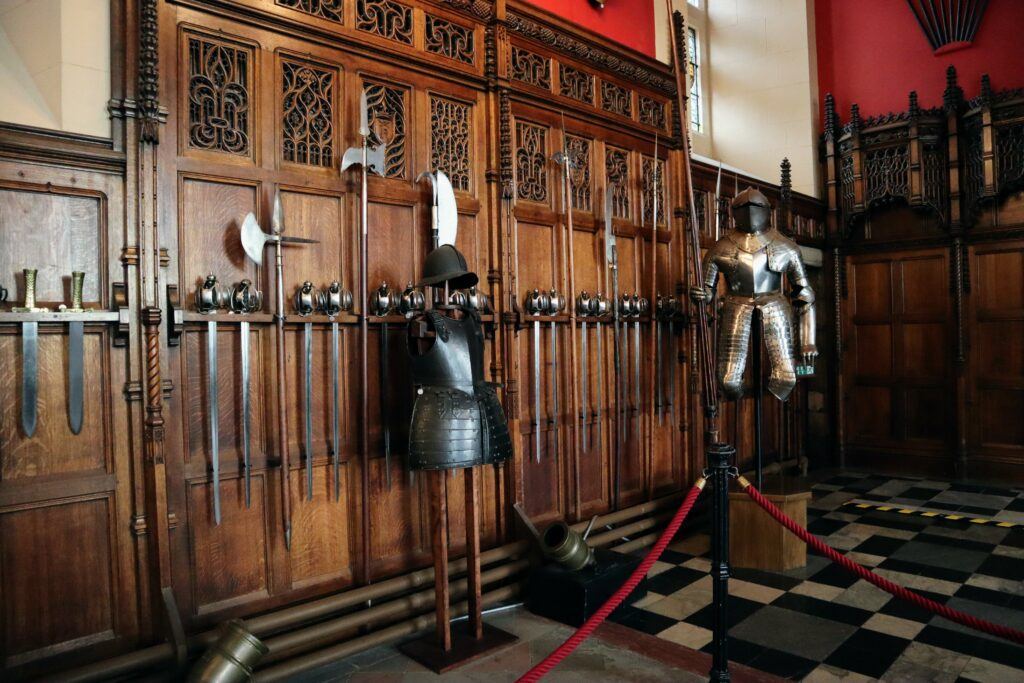

Jacobites
In 1660 Charles II was restored to the throne as King of England and Scotland. From around this point until 1923 a full-time standing army was garrisoned at the castle. The castle was also used as a prison and in 1661 the Marquis of Argyll was imprisoned here. Twenty years later Argyll’s son, the 9th Earl of Argyll was also imprisoned here and executed.
In 1688, the Catholic King James VII was deposed and exiled in what is known as the “Glorious Revolution”, in which James’s Protestant daughter Mary and her Dutch husband William of Orange became the only ever joint sovereigns.
These events led to the first Jacobite rising (the Jacobite’s purpose was to restore the Catholic Stuarts to the throne). In 1689, Edinburgh Castle was held by the Jacobite, Duke of Gordon but was besieged by the new monarch’s forces and their heavy arsenal which included mortars. Three months later all food and water supplies were running scarce and Gordon surrendered the castle.
In 1707 England and Scotland were formally united and the castle’s garrison began wearing the uniforms of the British government leading to the term Redcoats being used. In order to accommodate more military officers and gunners the Queen Anne Building was constructed.
In 1715 another Jacobite rising began with a rather embarrassing attempt to capture the castle. Approximately 100 Jacobites, led by Lord Drummond set out to scale the castle walls with assistance from members of the castle garrison. A rope ladder was dropped down from the castle but it turned out to be too short.
In the 1720s and 1730s major strengthening work on the fortifications was undertaken and in 1737 the Great Hall Barracks was redeveloped to expand capacity to 300 men. In 1742 the Governor’s House was built.
The final Jacobite rising in 1745 was led by Prince Charles Edward Stuart (“Bonnie Prince Charlie”). His army captured Edinburgh without a fight and he attempted to blockade the castle. Inside the castle was General George Preston who opened fire on a number of Jacobite positions within the town. The Jacobites lacked the necessary siege guns and so called off the blockade and marched south. This was the final time that Edinburgh Castle was ever besieged.
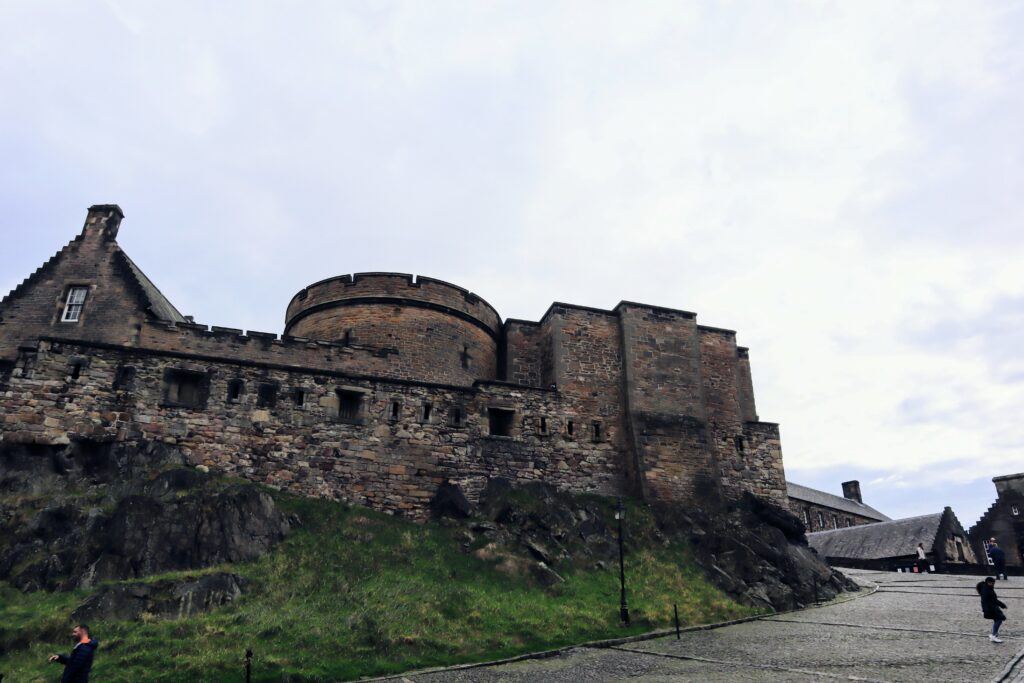
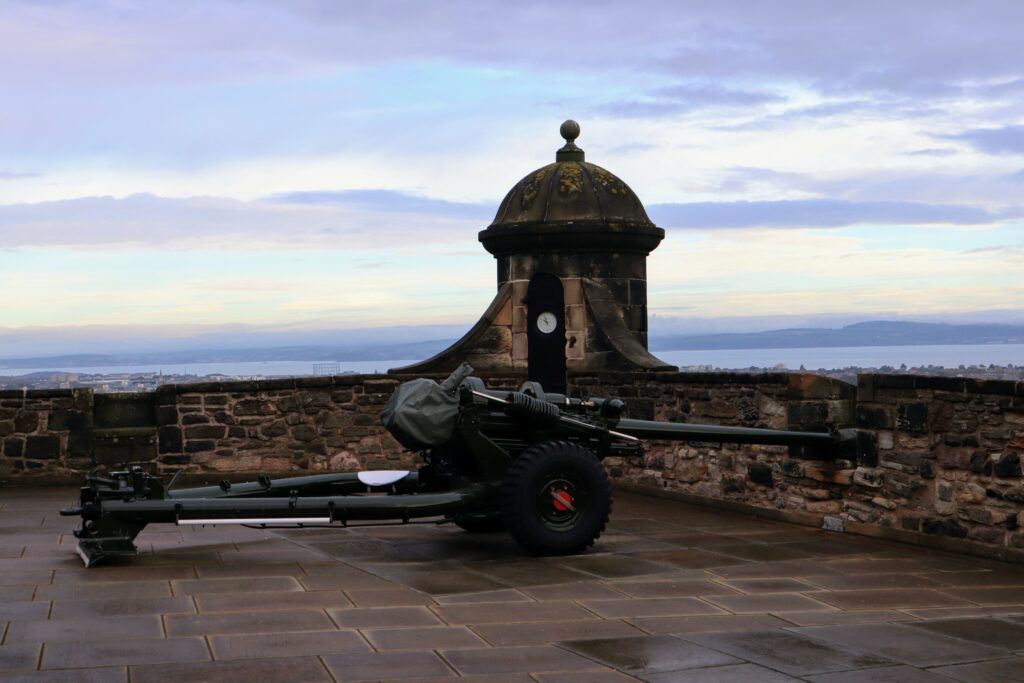
Military Base & Prison
The castle’s military functions continued and the castle vaults were used to hold prisoners of war several times, including the Seven Years War (1756-1763), the American War of Independence (1775-1783) and the Napoleonic Wars (1803-1815). Several new buildings were also added, including a new magazine, ordnance stores, cart shed and the gun store of the 1500’s was replaced by a new barracks for 290 men.
In 1811 there was a mass prison break out at the castle through a hole in the south wall. 49 inmates managed to escape and this led to the decision to end the castle’s function as a prison.
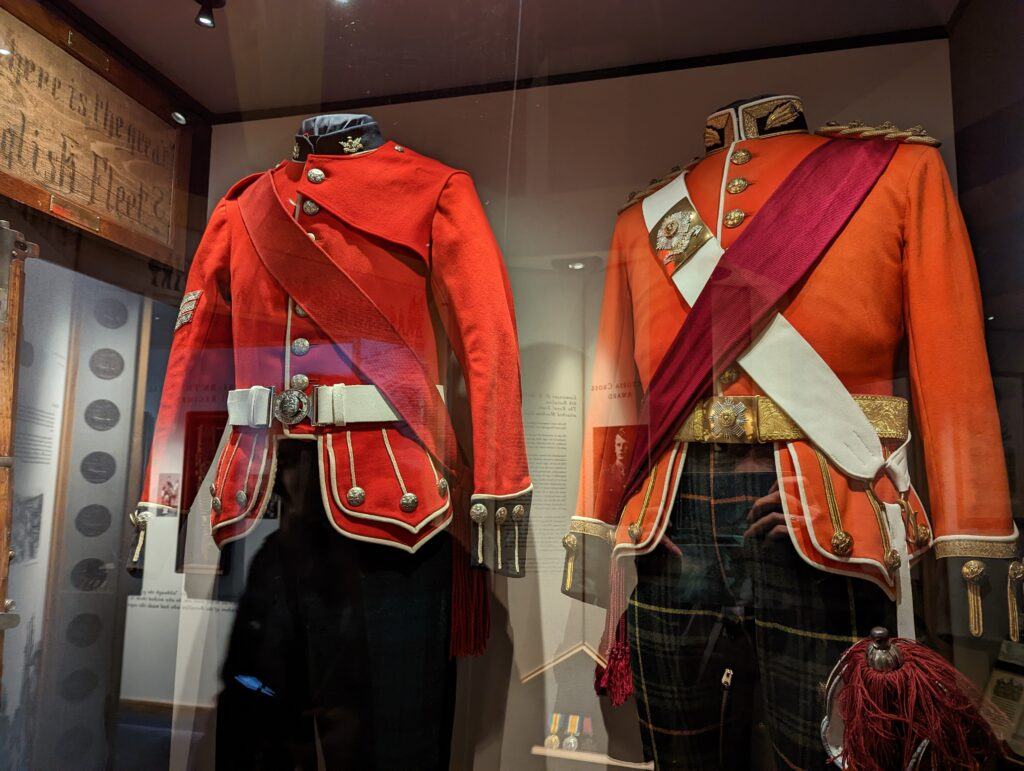

Fresh Phase
In February 1818, Sir Walter Scot rediscovered the Honours of Scotland hidden in a sealed room in the castle. They had been believed to have been lost since the union of England and Scotland in 1707. Once found they were immediately put on public display. In 1822, King George IV visited Edinburgh Castle, the first reigning monarch since Charles II in 1651.
In 1829 the legendary Mons Meg returned from the Tower of London after it had been moved there following the Jacobites rising in 1745. In the 1830’s the castle was opened up to visitors.
In 1845, St Margaret’s Chapel was rediscovered, it was used as a store and not recognised as the chapel for many years. At the main entrance a new Gatehouse was erected in 1888, to give the castle a more ‘authentic castle’ appearance and the Great Hall was restored in 1891.
Responsibility for the castle was transferred to the Office of Works in 1905, although the castle’s function as a garrison continued until 1923. The castle was used as a prison once more during the First and Second World Wars.
In 1991 the castle’s care was transferred to Historic Scotland and in 1995 it became part of the UNESCO World Heritage Site of the Old and New Towns of Edinburgh.
The castle is open to the public to visit for a fee and is the second most popular visitor attraction in the UK. Inside the castle two of Scotland’s greatest treasures are displayed, the Honours of Scotland and the Stone of Destiny and the famous One o’clock Gun is still fired everyday (except Sundays, Christmas Day and Easter Sunday).
Click below to explore Edinburgh Castle with us

